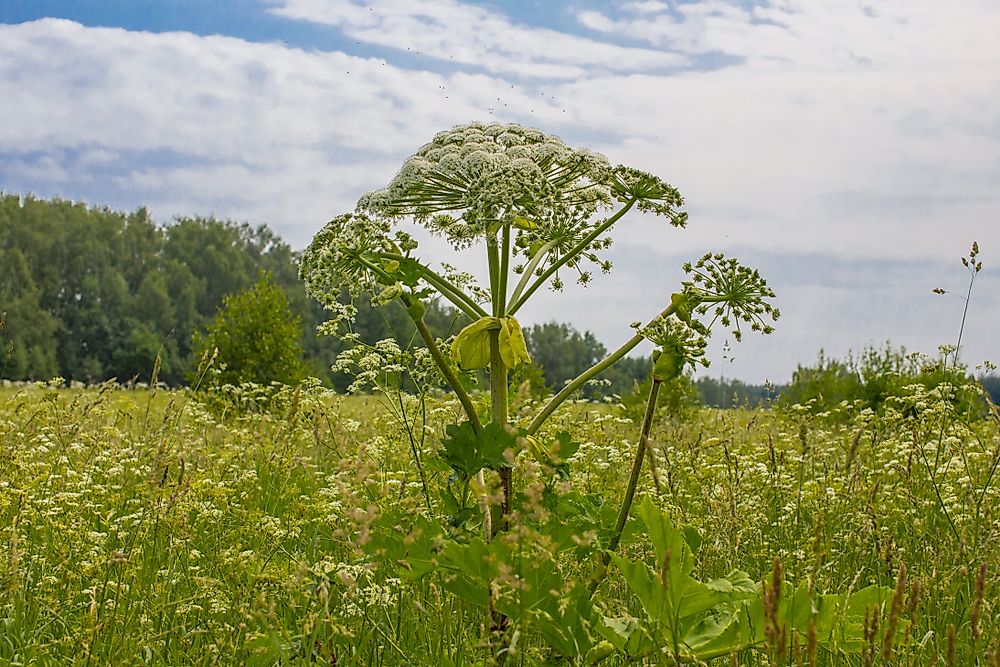What Is the Giant Hogweed Plant?

Typically known as the giant hogweed, Heracleum mantegazzianum is a flowering plant belonging to the scientific family Apiaceae. Other common names for the plant include giant cow parsnip, hogs-bane, giant cow parsley, cartwheel-flower, wild rhubarb, and wild parsnip. Native to Caucasia and Central Asia, the giant hogsweed has spread into North America and Europe. The plant is known to irritate the skin, and as such humans have been warned to stay away from the plan went found in North America and Europe. Because of this, as well as its negative impacts to native ecosystems, the plant is being actively removed in some areas.
Description
The plant has a sturdy stem that is bright green with the leaves of the stalks having red spots and strong bristles. The stems of the plants have been known to grow to heights of up to 7 feet with the stems typically having a diameter of between 1.2 inches and 3.1 inches. Sometimes, the diameter may reach 3.9 inches. The leaves of the giant hogweed plant may grow to have a width of between 3 feet 3 inches and 5 feet 7 inches. Each red spot located on the stem encloses a hair.
Giant hogweeds are described as being monocarpic perennial or biennial, that is, after setting seed, they begin the process of dying. Flowering occurs in the second year and is characterized by plenty of white flowers forming umbrella-shaped outlines that may have diameters of up to 31 inches at the top. One plant is capable of producing a whopping 100,000 dry seeds. The seed are dry, oval and a single one has a length of about 0.39 inches.
Introduction to Europe and North America
The plant is not native to Britain but it was introduced in the 19th century for the purposes of ornamentation. As of now, they have managed to invade ecosystems and destroyed other plants as well as reduce wildlife populations. The giant hogweed is also an invasive species in nations like Germany, Belgium, and France. The northern parts of the US and southern Canada have also been invaded. Because of its negative impacts to native ecosystems, the plant is being actively removed in some areas.
Toxicity
The sap of the plant is capable of causing a condition known as phytophotodermatitis, that is, a severe and irritating inflammation of the skin. This condition is only induced after the sap is exposed to ultraviolet rays or simply sunshine. In the initial stages of the condition, one begins to feel an itching while at the same time the skin turns red. Within 48 hours, burning blisters form on the exposed skin which will eventually end up leaving purple or back scars that remain on the skin for years. Some people have suggested that exposing the eye to the sap may lead to blindness. This allegation does not have any scientific proof. However, that blinding is not entirely impossible as some people have had to seek medical attention after exposure.
The entire process is caused by certain chemicals found in the leaves, flowers, stems, and seeds of the plant. When these chemicals come into contact with the skin, they are absorbed into the nucleus and mix with the DNA of a person. Consequently, the cells of the body end up dying. For this reason, people are advised not to let children close to the plant. Anyone wishing to approach it should wear protective clothing. If exposed, that area of the skin needs to be washed thoroughly with clean water.











